16. Night Of The Bloody Apes (1969)*
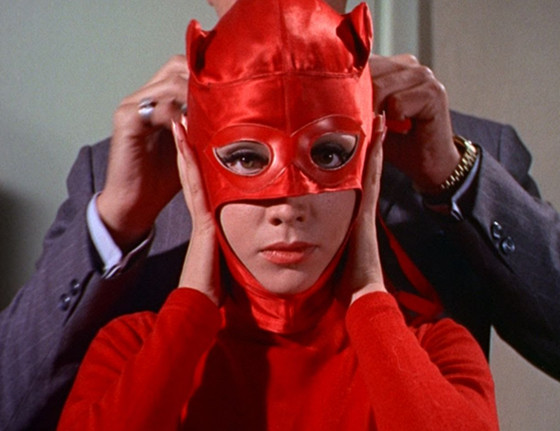
Proving that Britain’s moral watchdogs never actually watched the films they attempted to ban, Night Of The Bloody Apes is an unintentionally hilarious hodgepodge that includes mad scientists, Mexican wrestlers and a monstrous man-ape who rampages across Mexico ogling showering senoritas.
A very loose remake of director Rene Cardona’s earlier Doctor Of Doom (1963), the film throws in as much sex and cheap gore as it can to appeal to the international market, even adding some scenes of actual open heart surgery. Those scenes aside, the effects are laughably cheap, and the ape-man’s make-up will inspire chuckles even as he tears apart another victim.
Incredibly, the movie was deemed likely to “deprave and corrupt” British viewers, so it was added to the Video Nasties list in December 1983. In 1993, an uncut version was mistakenly distributed by Vipco, only to be withdrawn again days later.
15. Contamination (1980)
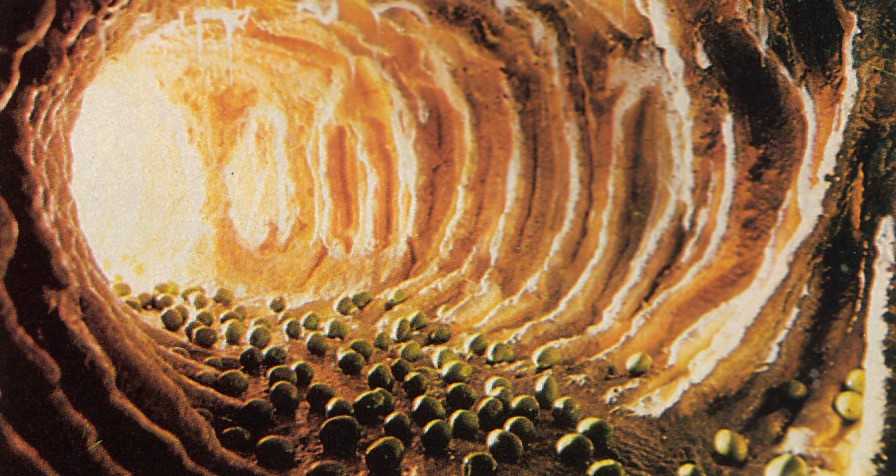
It’s hard to imagine anyone taking issue with this low-budget Alien rip-off because aside from a few gory sequences it’s one of the least offensive titles on the DPP list. When submitted to the BBFC in 2004, the uncut version was granted a “15” certificate.
Set for budgetary reasons on Earth, Contamination’s alien is a rubbery cyclops whose glowing eggs (actually painted balloons) detonate when they reach a certain temperature, showering anyone nearby with a toxic liquid that causes their bodies to explode. Got that? Using a coffee plantation as a front for smuggling the eggs all around the world, the creature intends to annihilate life on the planet but reckons without the attentions of Ian McCulloch, a former astronaut sent to put the kibosh on the scheme.
McCulloch had previously appeared in the notorious Zombie Flesh Eaters (1979) as well as the very similar Zombie Holocaust (1980), which must’ve been the reason why the film was branded a Video Nasty in October 1983. In order for it to become legally available, distributors had to remove nearly 3 minutes of exploding bodies in order to bring the movie into line with British tastes.
14. Dead And Buried (1981)
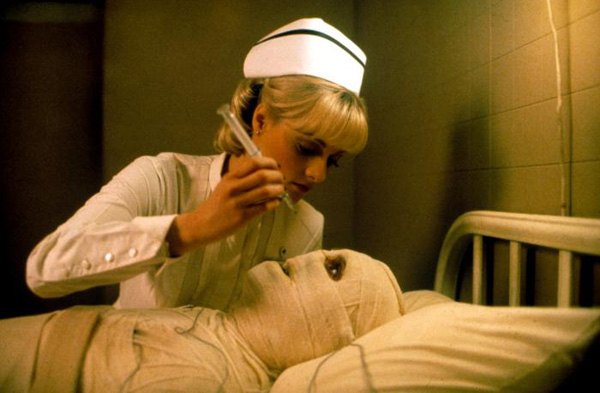
This dreamlike tale of weird goings on in a coastal town would make a terrific triple bill with Invasion Of The Body Snatchers and Messiah Of Evil. When Sheriff Gillis (James Farentino) investigates a string of murders in Potter’s Bluff (“a town the size of a postage stamp”), he uncovers a plot by a mad mortician to populate the town with his “children” – zombie-like facsimiles of murdered locals who have no memory of dying.
There are some sadistic moments – a man is set on fire, an eyeball is punctured by a syringe – but under the direction of Gary Sherman (Death Line), the picture is more eerie than violent. Its inclusion on the banned list seems both arbitrary and pointless, yet it was unavailable in its uncut form until 1999.
13. Cannibal Apocalypse (1980)*
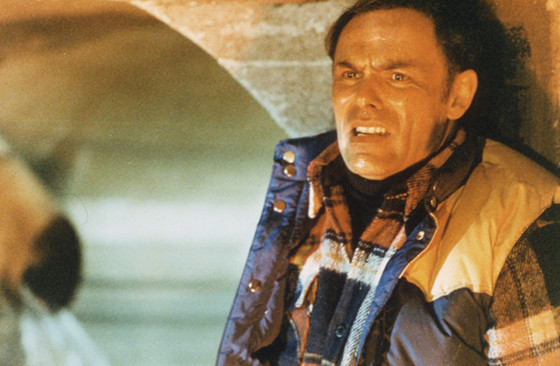
Not to be confused with Cannibal Ferox, Cannibal Holocaust, The Cannibal Man or Cannibal Terror, all of which made the DPP list, Cannibal Apocalypse was released in Italy as Apocalypse Domani in order to capitalize upon the success of Apocalypse Now. To make matters more confusing, it’s director Antonio Margheriti’s version of Dawn Of The Dead.
Infected with a virus during the war, a group Vietnam veterans return home and contaminate anyone they bite, resulting in an epidemic of cannibalism in 80s Atlanta. The effects are by Giannetto De Rossi, who handled similar chores on Zombie Flesh Eaters and House By The Cemetery, so tongues are ripped out and breasts are torn off, all of rubbed the DPP up the wrong way.
Released uncut in the UK in July 1982, the movie was banned a year later and remained unavailable until 2005, when it was released in a version shorn of 2 seconds to remove a scene of animal cruelty.
12. Inferno (1980)
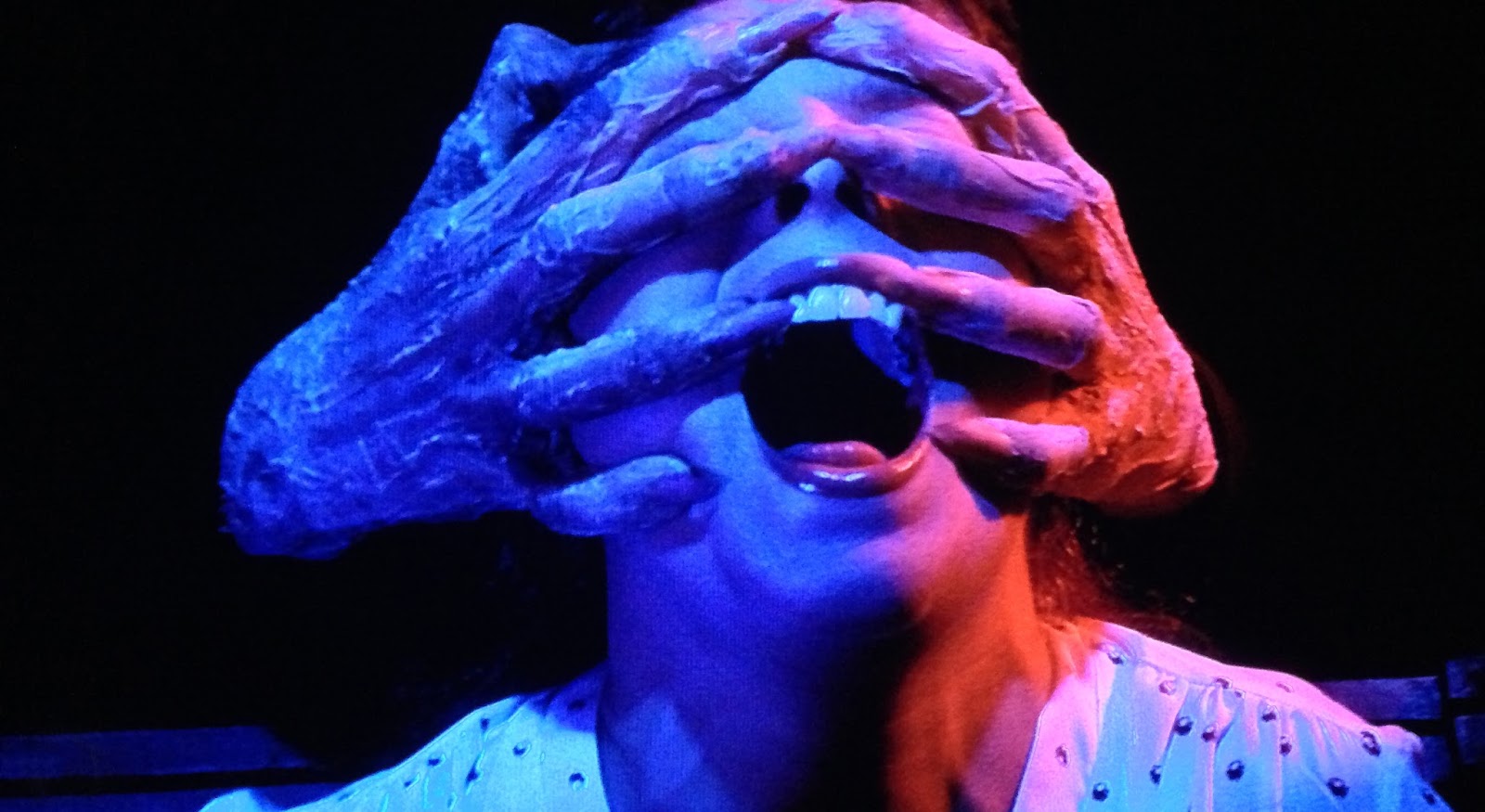
The first indication that Inferno would be problematic came when Dario Argento screened the movie for the President of Twentieth Century Fox, who told him the picture was “too strong” for American tastes and sent it straight to video. The film played theatrically in the UK, but a movie from the director of the successfully prosecuted Tenebrae was never going to escape unscathed and the film was added to the banned list in August 1984.
There are some grisly moments as Leigh McCloskey’s hero searches for his sister in New York but nothing that compares to the highlights of Tenebrae or Suspiria, and the film’s presence on the DPP list seems more like guilt by association than anything else. Inferno escaped prosecution, however, and was available in a cut version in 1987 before being released in its entirety in 2010.
11. The Last House On The Left (1972)*
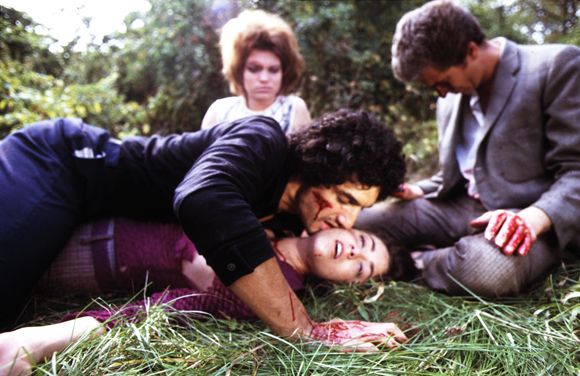
If ever an exploitation movie had greater intent than to appeal to the lowest common denominator, it’s Wes Craven’s Last House On The Left. Directed by a Professor of Humanities, and inspired by Ingmar Berman’s The Virgin Spring (1960), the film seems more interested in contrasting the lifestyles of the central characters than in exploiting the violence that brings them together.
In 1974, the first of many battles with the BBFC began when examiner Stephen Murphy rejected the film for theatrical release. He wrote: “We can find no redeeming merit in script, in acting, in character development or in direction which would lead us to feel that this muddly [sic] film is worth salvaging….Maybe we are wrong. But if we are to go into this area of sexual violence, it will have to be for a film in which we detect greater merit than this.”
A decade later, the situation escalated when police seized uncertified VHS copies of the film, which was subsequently banned and successfully prosecuted for obscenity. After years of disputes and appeals, the movie finally became legally available to watch (with cuts) in 2002, but it remained unavailable in its uncut form until 2008. By an extraordinary coincidence, a bigger-budgeted remake hit cinemas exactly one year later. It was passed uncut.
10. I Spit On Your Grave (1978)*
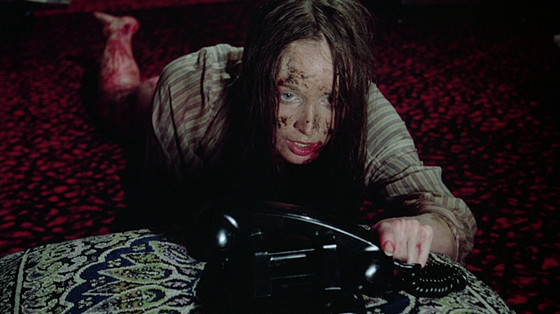
As Day Of The Woman, Meir Zarchi’s movie did little business until it was acquired by The Jerry Gross Organization, who changed the title and gave the picture a memorable (if inaccurate) tag line: “This woman has just cut, chopped, broken and burned four men beyond recognition….but no jury in America would ever convict her! I Spit On Your Grave….an act of revenge!”
If you need convincing of the film’s power, consider its censorship history in the UK. When it was formally submitted to the censor in 2001(after the uncertified video release was banned and prosecuted in the early 80s), the BBFC cited Article 10 of the European Convention of Rights (which “guarantees freedom of expression but does allow restrictions to be placed on such freedoms”) as justification for chopping seven minutes from the film, excising the sequence where Jennifer Hills (Camille Keaton) is raped over a rock.
In 2010, the censors concluded that these cuts were “excessive” and re-released the film with 2 min 54 sec trimmed, reinstating any material “that emphasized the horrors of sexual violence.” In the same year, the remake passed with only 43 seconds trimmed, proving that they really don’t make them like they used to.
9. Death Trap (1977)
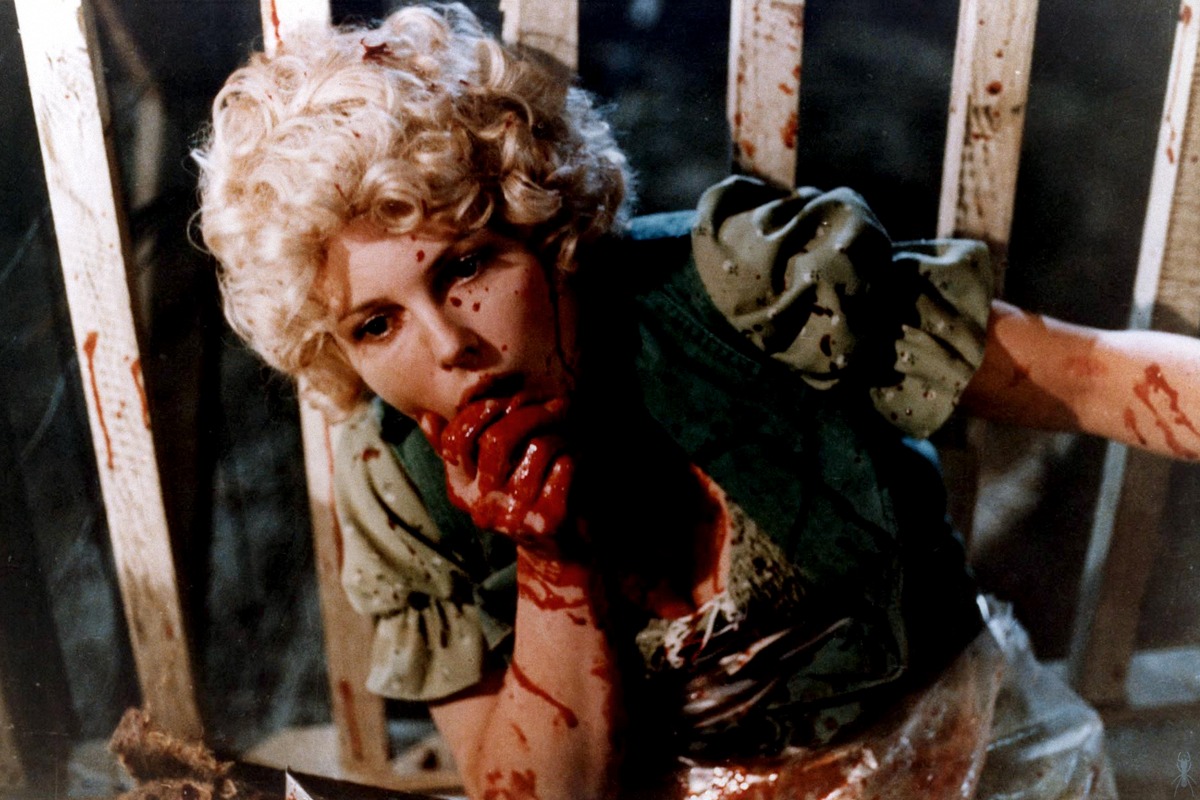
Let no one tell you that being known as the director of The Texas Chain Saw Massacre helped Tobe Hooper’s short-term career. When British censors took issue with the film’s “level of terrorisation” they refused to grant it a theatrical certificate and, for good measure, banned his next two theatrical features, Death Trap (aka Eaten Alive) and The Funhouse.
It’s no Chain Saw Massacre, but Death Trap is loaded with the same gleeful black humour as Neville Brand, playing the least reassuring motel owner since Anthony Perkins, feeds his guests to the crocodile in his front yard. There’s more sleaze than usual, too, perhaps reflecting the fact that the movie was produced by Mardi Rustam, producer of the American classics Please Don’t Eat The Babies (1983), Psychic Killer (1975) and Lash Of Lust (1972).